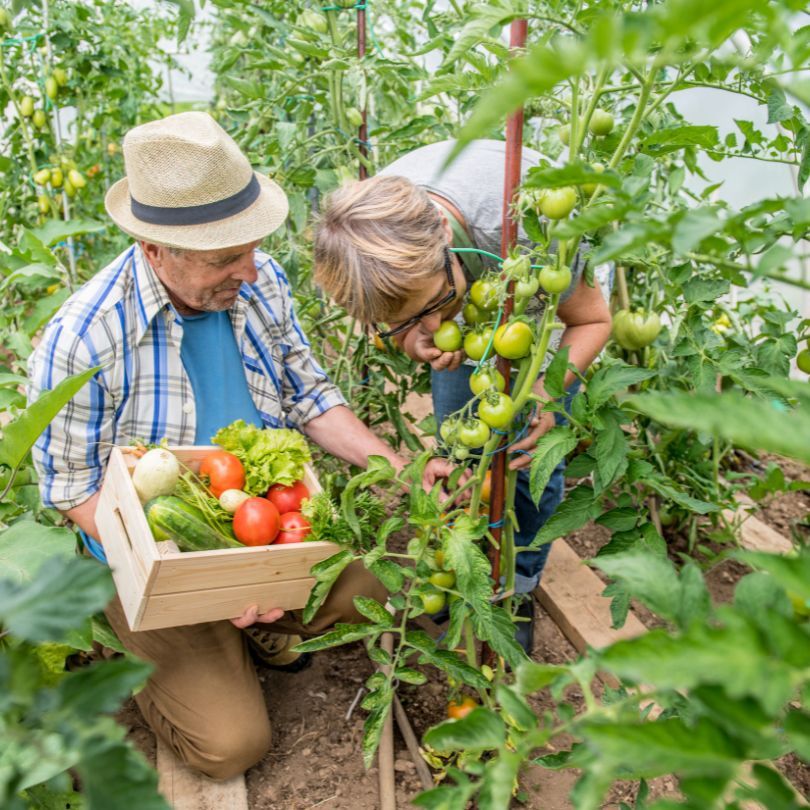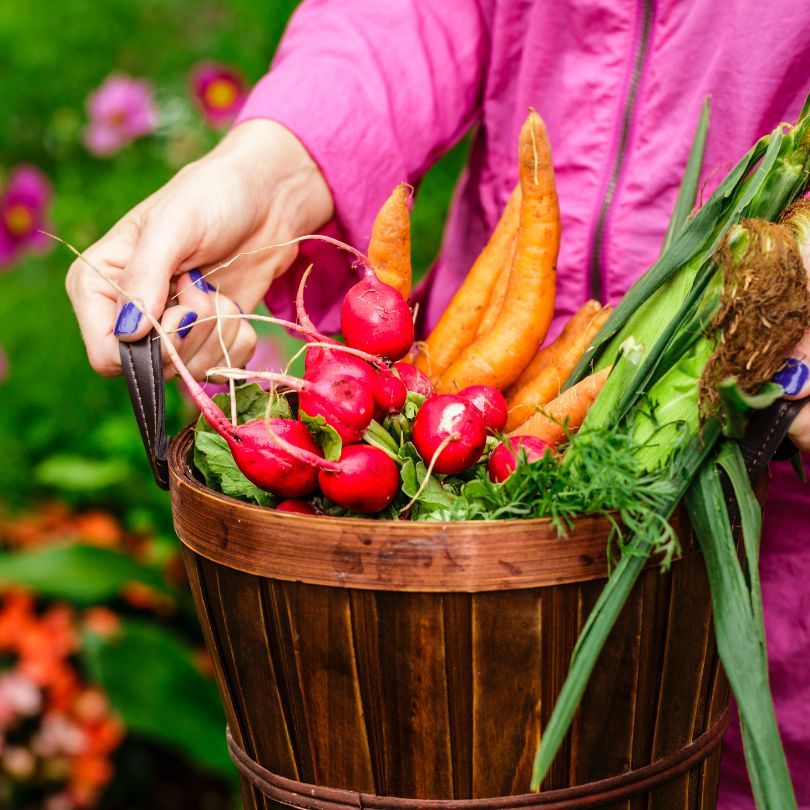
Key Takeaways
Starting a survival garden requires selecting versatile and in-demand crops.
Tools like a sturdy shovel, a reliable watering system, and quality seeds are essential for garden success.
Techniques such as maximizing space, companion planting, and crop rotation boost yield for bartering.
Preserving your harvest through canning, drying, and freezing ensures you have goods to barter year-round.
Developing negotiation skills and building a trustworthy network are key to effective bartering.
When the going gets tough, the tough get gardening. A survival garden isn’t just about putting food on the table; it’s a strategic reserve for bartering, giving you an edge in times of scarcity. Here, you’ll learn the top strategies to turn your garden into a bartering powerhouse.
First Steps to a Thriving Survival Garden
Before you sow a single seed, planning is crucial. Your survival garden must be reliable, sustainable, and productive. It’s not just about growing food for your family; it’s about cultivating a surplus to trade.
Choosing the Right Crops for Bartering
When selecting crops, think about what will be in high demand in a barter economy. Here are a few to consider:
Heirloom vegetables: Their seeds can be saved and replanted, making them a renewable resource.
Medicinal herbs: Always sought after for their health benefits.
Fruit trees and berry bushes: Provide a sweet treat and can be used to make preserves.
Remember, diversity is key. A variety of crops ensures you have something to offer no matter the demand. For more information on how to get started, check out this guide on quick-grow veggies for emergency food production.
Essential Tools for Starting Your Garden
Now, let’s talk tools. You’ll need a few basics to get started with your bootstrap survival garden.
A sturdy shovel for preparing beds and planting.
A watering system, whether it’s a simple watering can or a more elaborate drip irrigation setup.
Quality seeds are crucial, and non-GMO or heirloom varieties are especially valuable for bartering.
Investing in these tools upfront will pay dividends when your garden starts producing.
Cultivating Abundance for Trade

Your goal is abundance, and that means getting the most out of the space you have.
Maximizing Production in Small Spaces
Even if you’re working with limited space, techniques like vertical gardening and succession planting can increase your yield significantly. Use trellises for climbing plants and plan your planting calendar so that as soon as one crop is harvested, another is ready to go in the ground.
Companion Planting and Crop Rotation
Companion planting is about pairing plants that benefit each other, like tomatoes and basil or corn and beans. Crop rotation, on the other hand, prevents soil depletion and reduces the risk of disease. Both practices are essential for a productive garden that can sustain bartering year after year.
Canning, Drying, and Freezing Techniques
Once your garden is in full swing, it’s time to think about preservation. Canning, drying, and freezing are your best friends when it comes to keeping your harvest for off-season bartering. Canned tomatoes, dried herbs, and frozen berries are just a few examples of how you can turn today’s surplus into tomorrow’s bartering chips.
Storing Seeds for Future Planting
Seeds are like gold in a survivalist’s world. After your harvest, make sure to save seeds from the healthiest plants. Store them in a cool, dry place, and you’ll have a personal seed bank that can also become a valuable bartering item.
Bartering Basics: How to Trade Wisely

Bartering is an art as much as it is a trade. It’s about offering value and receiving what you need in return. But how do you know what’s fair?
First, understand the needs of your community. A basket of fresh vegetables might be worth more in a city setting than in a rural area where gardens are common. And always remember, trust is the currency of barter; if you’re fair, your reputation will grow, and so will your bartering opportunities.
Assessing the Value of Your Goods
To barter effectively, you need to know the worth of what you’re offering. This doesn’t just mean how much you value it, but how much others do. Research, ask around, and start to get a sense of what’s in demand. A general rule is that the more effort and resources that go into producing something, the higher its bartering value.
Developing Negotiation Skills for Better Trades
Good negotiation is key to successful bartering. Be clear about what you want, but also be willing to compromise. It’s not about winning or losing; it’s about reaching an agreement that benefits both parties. Practice makes perfect, so start small and build your confidence.
Building Relationships with Your Bartering Network
Bartering isn’t a one-off transaction; it’s about building a network of reliable trade partners. This network becomes your safety net in tough times. Discover more about heirloom seeds and their importance in modern survival gardening to strengthen your bartering potential.
Start by trading small items to build trust.
Always deliver what you promise, and don’t be afraid to go the extra mile.
Be consistent. The more reliable you are, the more people will want to trade with you.
Remember, a strong network isn’t built overnight, but it’s worth the effort.
Identifying Trustworthy Trading Partners
Not everyone will be a good trading partner. Look for individuals who are fair, honest, and have a reputation for keeping their word. A good trade partner is someone who values the relationship as much as the trade.
Maintaining Goodwill Through Fair Exchanges
Goodwill is the foundation of any bartering system. It’s more than just the goods you exchange; it’s the trust and camaraderie that come with it. Always aim for a fair trade that leaves both parties satisfied. This ensures ongoing relationships and a strong bartering network.
Expanding your bartering portfolio means thinking beyond the immediate harvest. It’s about recognizing opportunities and being creative with what you offer.
Expanding Your Bartering Possibilities
Introducing New Goods and Services to Your Trades
Don’t limit yourself to just what you grow. If you have other skills, like carpentry or knitting, include these in your bartering arsenal. Homemade crafts, repair services, or even teaching a skill can all be bartered. Diversifying your offerings makes you a valuable resource in your community.
Leveraging Surplus for Desirable Resources
If you find yourself with a surplus, consider how you can use it to secure items that are scarce but necessary. For example, if you have an abundance of tomatoes, you could trade them for essential items like rice, beans, or even services like tool repair. It’s all about supply and demand.
FAQs
How Do I Determine What My Garden Produce is Worth?
To gauge the value of your produce, start by understanding its worth to others. What would they be willing to pay in a traditional market? How scarce are the goods you’re offering? Use this as a starting point for your negotiations, but be flexible based on the needs and offerings of your trading partner.
What Are the Risks Involved in Bartering, and How Can I Minimize Them?
The biggest risk in bartering is not getting a fair exchange. To minimize this, know the value of your goods, and don’t be afraid to walk away if a deal doesn’t feel right. Also, trade with trusted partners to ensure that you’re both satisfied with the exchange.
Can I Barter with Services Instead of Garden Products?
Absolutely! Services can be incredibly valuable in a barter system. If you have a skill, such as repairing tools, sewing, or even teaching, these can be exchanged just as effectively as physical goods. In fact, services often have the advantage of being renewable resources – your skills can be offered time and time again.
How Can I Ensure My Survival Garden Will Be Sustainable Long-Term?
To ensure the sustainability of your garden, focus on soil health, water conservation, and seed saving. Rotate crops to prevent soil depletion, use mulching and rainwater collection to conserve water, and save seeds from your best plants for future planting.
What Are Some Common Misconceptions About Bartering?
One common misconception is that bartering is a primitive or inefficient system. On the contrary, bartering can be incredibly efficient, as it allows for direct trade without the need for money. Another is that bartering is only useful in survival situations – in reality, it can be a practical way to live day-to-day, reducing reliance on cash and fostering community connections.
In conclusion, a survival garden is more than just a source of sustenance; it’s a foundation for building self-reliance and community resilience through bartering. By selecting the right crops, mastering preservation techniques, and honing your negotiation skills, you can turn your garden into a hub of trade. Remember to nurture relationships as carefully as you do your plants, for these connections are the true lifeblood of any bartering system.







Leave a Reply